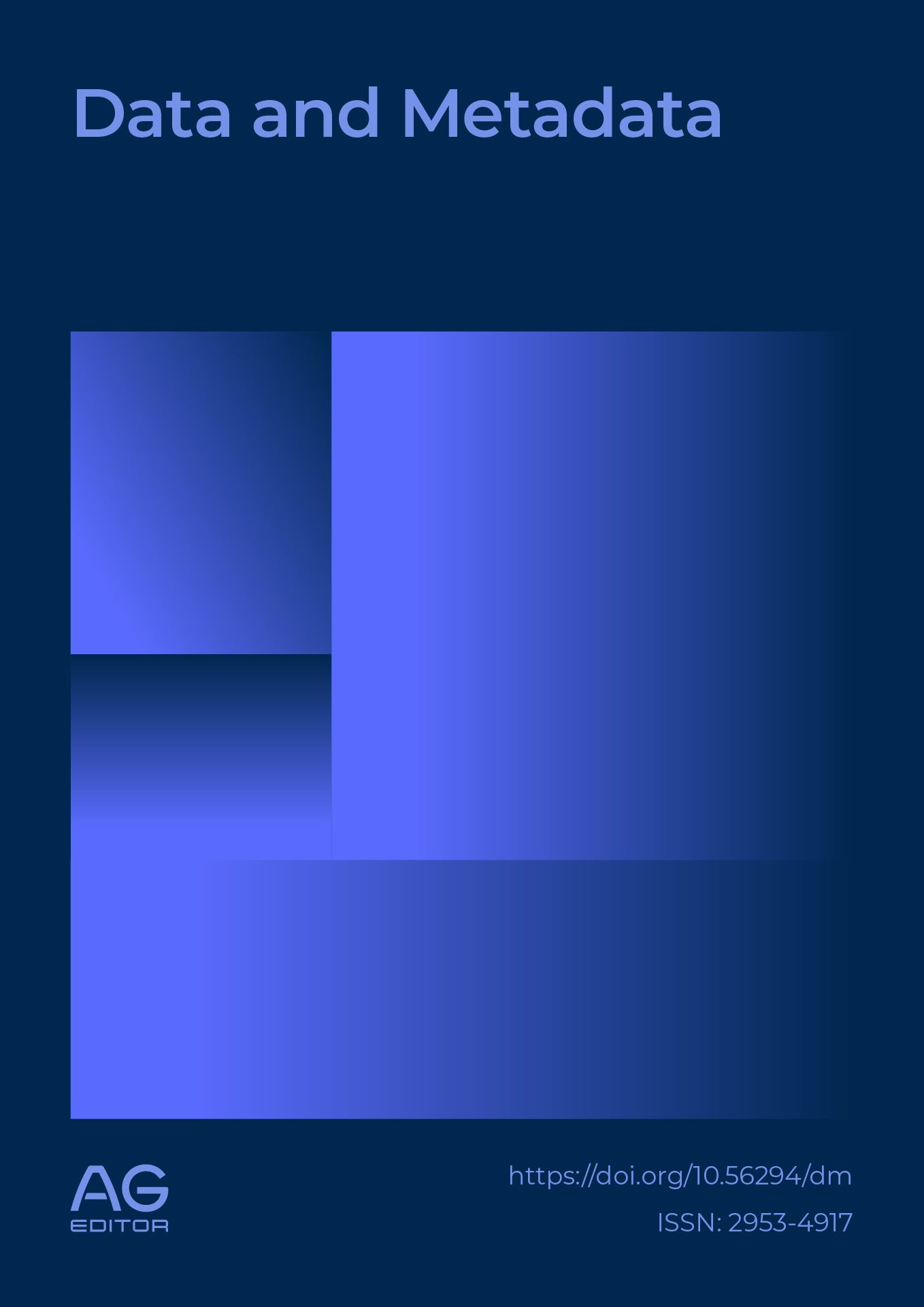A new hybrid approach based on machine learning for more efficient time series forecasting
DOI:
https://doi.org/10.56294/dm2025589Keywords:
Forecasting Time Series, Hybrid models, Machine learning, ARIMA, GRUAbstract
Introduction: Forecasting new student enrollment in bachelor's degree programs has emerged as a critical need for higher education institutions. Accurate enrollment predictions are essential for improving the student-teacher ratio and optimizing resource allocation.
Methods: A hybrid approach combining statistical and machine learning techniques was proposed to develop accurate forecasting models. The study utilized the historical enrollment database of Ibn Zohr University, which included data from over twenty institutions dating back to 2003. This dataset was used to train and validate the proposed models.
Results: The hybrid approach demonstrated superior accuracy compared to standalone statistical and machine learning models. The results indicated that the proposed method effectively captured enrollment trends and provided reliable forecasts.
Conclusions: The study concluded that the hybrid approach offers a robust solution for enrollment forecasting in higher education. It highlighted the potential of combining statistical and machine learning techniques to improve prediction accuracy, thereby aiding institutions in better planning and resource management..
References
1. E. Erdem y J. Shi, «ARMA based approaches for forecasting the tuple of wind speed and direction», Appl. Energy, vol. 88, n.o 4,
pp. 1405-1414, abr. 2011, doi: 10.1016/j.apenergy.2010.10.031. DOI: https://doi.org/10.1016/j.apenergy.2010.10.031
2. Z. Qian, Y. Pei, H. Zareipour, y N. Chen, «A review and discussion of decomposition-based hybrid models for wind energy forecasting applications», Appl. Energy, vol. 235, pp. 939-953, feb. 2019, doi: 10.1016/j.apenergy.2018.10.080. DOI: https://doi.org/10.1016/j.apenergy.2018.10.080
3. P. J. Brockwell y R. A. Davis, «Forecasting Techniques», en Introduction to Time Series and Forecasting, en Springer Texts in Statistics. Cham: Springer International Publishing, 2016, pp. 309-321. doi: 10.1007/978-3-319-29854-2_10. DOI: https://doi.org/10.1007/978-3-319-29854-2_10
4. T.-C. Fu, F.-L. Chung, y C. Ng, «Financial Time Series Segmentation based on Specialized Binary Tree Representation.», ene. 2006, pp. 3-9.
5. L. Munkhdalai, M. Li, N. Theera-Umpon, S. Auephanwiriyakul, y
K. Ryu, «VAR-GRU: A Hybrid Model for Multivariate Financial Time Series Prediction», 2020, pp. 322-332. doi: 10.1007/978-3-030-42058-1_27. DOI: https://doi.org/10.1007/978-3-030-42058-1_27
6. Z. Cui, J. Wu, W. Lian, y Y.-G. Wang, «A novel deep learning framework with a COVID-19 adjustment for electricity demand forecasting», Energy Rep., vol. 9, pp. 1887-1895, dic. 2023, doi: 10.1016/j.egyr.2023.01.019. DOI: https://doi.org/10.1016/j.egyr.2023.01.019
7. F. Kamalov, K. Rajab, A. K. Cherukuri, A. Elnagar, y M. Safaraliev, «Deep learning for Covid-19 forecasting: State-of-the-art review.», Neurocomputing, vol. 511, pp. 142-154, oct. 2022, doi: 10.1016/j.neucom.2022.09.005. DOI: https://doi.org/10.1016/j.neucom.2022.09.005
8. S. R. Srivastava, Y. K. Meena, y G. Singh, «Forecasting on Covid-19 infection waves using a rough set filter driven moving average models», Appl. Soft Comput., vol. 131, p. 109750, dic. 2022, doi: 10.1016/j.asoc.2022.109750. DOI: https://doi.org/10.1016/j.asoc.2022.109750
9. H. Bousnguar, L. Najdi, y A. Battou, «Forecasting approaches in a higher education setting», Educ. Inf. Technol., pp. 1-19, ago. 2021, doi: 10.1007/s10639-021-10684-z. DOI: https://doi.org/10.1007/s10639-021-10684-z
10. A. Cruz et al., «Higher Education Institution (HEI) Enrollment Forecasting Using Data Mining Technique», Int. J. Adv. Trends Comput. Sci. Eng., vol. 9, pp. 2060-2064, may 2020, doi: 10.30534/ijatcse/2020/179922020. DOI: https://doi.org/10.30534/ijatcse/2020/179922020
11. M. Edwards, «College Enrollment during Times of Economic Depression», J. High. Educ., vol. 3, n.o 1, pp. 11-16, ene. 1932, doi: 10.1080/00221546.1932.11775229. DOI: https://doi.org/10.1080/00221546.1932.11775229
12. Z. Ismail, «A decision support system for improving forecast using genetic algorithm and tabu search», ARPN J. Eng. Appl. Sci., vol. 3, n.o 3, Art. n.o 3, jun. 2008.
13. J. G. De Gooijer y R. J. Hyndman, «25 years of time series forecasting», Int. J. Forecast., vol. 22, n.o 3, pp. 443-473, ene. 2006, doi: 10.1016/j.ijforecast.2006.01.001. DOI: https://doi.org/10.1016/j.ijforecast.2006.01.001
14. R. G. Brown, R. F. Meyer, y D. A. D’Esopo, «The Fundamental Theorem of Exponential Smoothing», Oper. Res., vol. 9, n.o 5, pp. 673-687, 1961.A. Shadab, S. Said, y S. Ahmad, «Box–Jenkins multiplicative ARIMA modeling for prediction of solar radiation: a case study», Int. J. Energy Water Resour., vol. 3, n.o 4, pp. 305-318, dic. 2019, doi: 10.1007/s42108-019-00037-5. DOI: https://doi.org/10.1007/s42108-019-00037-5
15. Q. Mao, K. Zhang, W. Yan, y C. Cheng, «Forecasting the incidence of tuberculosis in China using the seasonal auto-regressive integrated moving average (SARIMA) model», J. Infect. Public Health, vol. 11, n.o 5, pp. 707-712, sep. 2018, doi: 10.1016/j.jiph.2018.04.009. DOI: https://doi.org/10.1016/j.jiph.2018.04.009
16. Z. C. Lipton, J. Berkowitz, y C. Elkan, «A Critical Review of Recurrent Neural Networks for Sequence Learning», ArXiv150600019 Cs, oct. 2015, Accedido: 11 de enero de 2021. [En línea]. Disponible en: http://arxiv.org/abs/1506.00019
17. A. H. Elsheikh, V. P. Katekar, O. L. Muskens, S. S. Deshmukh, M.
A. Elaziz, y S. M. Dabour, «Utilization of LSTM neural network for water production forecasting of a stepped solar still with a corrugated absorber plate», Process Saf. Environ. Prot., vol. 148,
pp. 273-282, abr. 2021, doi: 10.1016/j.psep.2020.09.068. DOI: https://doi.org/10.1016/j.psep.2020.09.068
18. D. Lavrova, D. Zegzhda, y A. Yarmak, «Using GRU neural network for cyber-attack detection in automated process control systems», en 2019 IEEE International Black Sea Conference on Communications and Networking (BlackSeaCom), jun. 2019, pp. 1-3. doi: 10.1109/BlackSeaCom.2019.8812818. DOI: https://doi.org/10.1109/BlackSeaCom.2019.8812818
19. I. Livieris, E. Pintelas, S. Stavroyiannis, y P. Pintelas, «Ensemble Deep Learning Models for Forecasting Cryptocurrency Time-Series», Algorithms, vol. 13, p. 121, may 2020, doi: 10.3390/a13050121. DOI: https://doi.org/10.3390/a13050121
20. N. Kourentzes, F. Petropoulos, y J. R. Trapero, «Improving forecasting by estimating time series structural components across multiple frequencies», Int. J. Forecast., vol. 30, n.o 2, pp. 291-302, 2014. DOI: https://doi.org/10.1016/j.ijforecast.2013.09.006
21. H. Bousnguar, A. Battou, y L. Najdi, «Gated Recurrent units (GRU) for Time Series Forecasting in Higher Education», Int. J. Eng. Res. Technol., vol. 12, n.o 3, mar. 2023, doi: 10.17577/IJERTV12IS030091.
Downloads
Published
Issue
Section
License
Copyright (c) 2025 Hassan Bousnguar, Lotfi NAJDI, Amal BATTOU (Author)

This work is licensed under a Creative Commons Attribution 4.0 International License.
The article is distributed under the Creative Commons Attribution 4.0 License. Unless otherwise stated, associated published material is distributed under the same licence.




